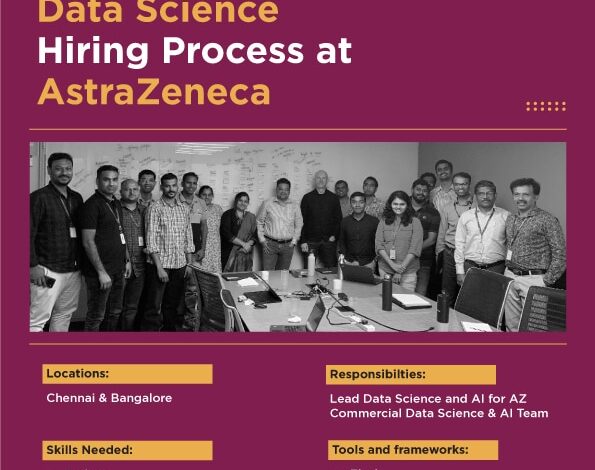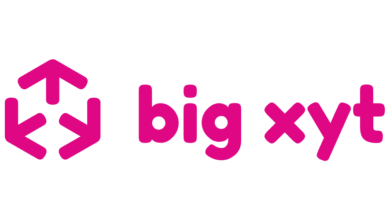Data Science Hiring Process at AstraZeneca – AIM

With over 45 years of presence in India, British-Swedish pharmaceutical and biotechnology giant AstraZeneca has data science and AI capabilities deeply ingrained across its entire drug development lifecycle.
For the company, AI plays a pivotal role in accelerating target identification, drug discovery, clinical trials, and commercial analytics. AstraZeneca has implemented rigorous processes to ensure the responsible development and deployment of AI and ML solutions.
Internally built use cases, solutions, or tools undergo an AI governance maturity assessment before production deployment to ensure compliance with the company’s responsible AI development standards, aligning with their data ethics principles.
Teams from all business areas contribute to this process, fostering a collaborative approach to ensure AI is developed and deployed safely and responsibly.
AIM recently got in touch with Arun Maria, director of data and AI, R&D IT; Govind Cheramkalam, director of commercial reporting and analytics; and Anuradha Kumar, head HR, AstraZeneca, to understand more about the GCC’s AI operations, expansion opportunities, hiring process, work culture and more.
Inside AstraZeneca’s Data Science Labs
AstraZeneca is also active in leveraging generative AI, with use cases spanning research assistance, executive reporting, and competitive intelligence. For example, AZ ChatGPT, an AI-powered research assistant, uses the company’s extensive biology and chemistry knowledge repositories to answer complex questions and provide prompts on discovery and clinical inquiries.
“We are currently evaluating the capabilities of LLMs like AZ ChatGPT to improve insight generation for executive reports distributed to CXOs and decision-makers in brand and marketing companies,” Maria told AIM.
Another such example is the Biological Insight Knowledge Graph (BIKG), a proprietary model developed by AstraZeneca.
“It utilises the company’s exclusive machine learning models to serve as a recommendation system, enabling scientists to make efficient and informed decisions regarding target discovery and pipeline management. The primary goal of BIKG is to minimise attrition rates and improve clinical success,” Cheramkalam explained.
The company has an Enterprise Data and AI strategy unit, with data and AI teams embedded across business and IT functions, fostering a collaborative environment to ensure the provision of foundationally FAIR (Findable, Accessible, Interoperable, and Reusable) data at the source.
Data engineers, MLOps engineers, AI and ML engineers work as unified teams, promoting collaboration and accelerating business outcomes through structured learning and development programs that cultivate new skills internally.
“AstraZeneca uses a plethora of in-house and externally sourced tools, frameworks and products ranging across very proprietary in-house tools as well as Databricks and PowerBI,” said Maria.
The company uses Transformer and GPT models, including testing Microsoft’s Azure OpenAI Service with cutting-edge models like GPT-4 and GPT-3.5. To foster innovation and engagement, AstraZeneca follows a hybrid working model, promoting collaboration while offering flexibility.
Interview Process
AstraZeneca aims to become a data-led enterprise, integrating data into all aspects of its operations. To achieve this, the company seeks candidates with strong skills in Python, machine learning, deep learning, computer vision, and NLP, along with a mindset geared toward growth through innovation.
The interview process is designed to understand both the candidate’s suitability for the role and the company. “For all our roles we look for candidates that not only have the skills, knowledge, experience and competence but can also live our values and behaviour,” Kumar told AIM.
Apart from this, assessments at AZ focus on evaluating whether candidates will perform well in the position, demonstrate leadership potential, exhibit enthusiasm and motivation, and work collaboratively in a team.
Potential candidates should prepare by understanding these key areas and reflecting on their experiences and qualities that they can bring to the table.
What Candidates Should Expect
Joining AZ’s data science team offers opportunities to collaborate with diverse teams, tackle new challenges, and work with the latest technology. The environment supports development and innovation, with the ultimate goal of powering the business through science and market delivery.
“As a candidate, research our strategic objectives, core values, and the position you’ve applied for. Use our social media or website to learn about the organisation, team, and people. In the interview, be ready to discuss your past experiences and what you’ve learned from them,” said Kumar.
This will help in avoiding the common mistakes of a lack of preparation about the company and the specific role they are applying for.
Work Culture
AstraZeneca fosters a supportive and inclusive workplace where employees can learn and grow. New hires benefit from onboarding and buddy programs, while extensive training and career development opportunities are available for all. The gender ratio is approximately 66.3% male to 33.8% female.
The company was also recognised by AIM Media House in 2022 for its excellent work in AI and ML, thanks to its focus on putting patients first. It was once again recognised by AIM in 2024 for its data engineering excellence.
In the data science team, AstraZeneca encourages cross-disciplinary collaboration and lifelong learning through the 3Es framework: Experience, Exposure, and Education.
The company has a global peer-to-peer recognition system and offers comprehensive benefits, including medical insurance covering parents or parents-in-law, personal accident insurance, term life insurance, and childcare support for new parents.
If you think you are a good fit for the company, check out its career page here.



